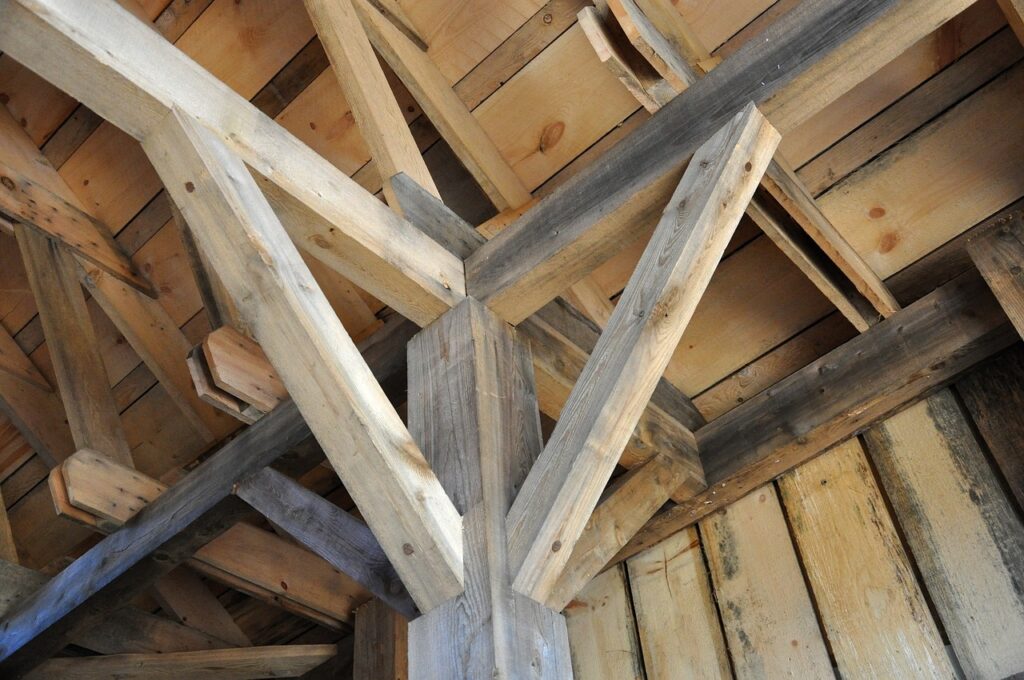How big is the UK timber-frame industry?
Traditional timber framing refers to the popular method of building with heavy timbers, creating structures using squared-off and carefully fitted and joined timbers.
This practice of creating framed structures of wood to build homes – filled with brick, stone or filler allowing the structure more resilience – is a growing phenomenon, but its origin dates back many years.
History
Timber framing has been popular in construction for thousands of years thanks to the sturdy, resilient qualities of the material and relative ease of development.
In the UK, archaeologists have discovered evidence of timber-framed homes dating back almost 10,000 years, followed by a surge in popularity during the Roman and Georgian period. The University of Southampton took a truly insightful excavation into the use of timber frame in Roman times, which you can read here.
The UK timber frame industry is one of the oldest branches of engineering and is reshaping the UK house-building industry today. Housebuilding has proved the most buoyant sector of the UK construction industry for the past five years. A recent using data from 80% of the timber frame market found that the sector was growing at a faster rate than the UK economy.
That figure was surpassed in 2016, according to the STA’s Timber Trends Report which records double-digit growth, estimated at around 56,000 timber frame homes.
Here’s why the UK timber-frame industry is surging.
Sustainability
With its energy-efficient credentials and minimised carbon footprint, timber-frame is an incredibly eco-friendly solution to housebuilding.
With the growing awareness of sustainability in building regulations, and the increase in education surrounding the detriment normal construction and developmental projects are causing to the environment, timber is becoming more and more attractive as the go-to building material.
Cost & speed
There is still a perception that timber frame is more expensive than bricks and blocks. This isn’t the case as the speed of construction, efficiency and reduced foundation requirement actually bring down the overall cost.
There is also far less disruption to the local environment and the delivery of materials is much less of an arduous task, leaving timescales for the build much shorter.
Specification
With timber, it’s easier to create thicker, better insulated walls and to produce a house with a higher specification – which is great for when it comes time to sell!
But for first-time builders, timber also offers more flexibility to specify details such as room sizes and layout, making the material much more suitable for those looking for the perfect home.
Innovation
While the structure and appearance of timber-framed houses might look very similar to how they did 40 years ago, innovative steps have been made to enhance the building’s comfort and efficiency. This includes insulation, vapour barriers and draft control, making the overall build and use of timber a much more attractive offering.
Hybrid solutions are also on the rise, incorporating timber and metal – metal web. This provides opportunities for commercial developers, for example, to incorporate these materials where wide span, cable/pipe-accessible floors are required.
The shortage of on-site building skills
The growth of timber frame is gradually changing long-established practices within housebuilding as the construction industry slowly but surely embraces the idea of off-site manufacture.
Builders struggle to recruit some of the traditional trades to building sites owing to a shortage of skills. This means the ability to assemble much of a house’s structure off-site is an attractive benefit of the UK timber-frame industry, as is the quality control which goes with increasingly systemised, automated offsite solutions.
Structural timber technology addresses many government concerns associated with the procurement of housing – including environmental impact and energy efficiency, as well as speed of construction and cost.
We hope this provides you with enough reasons to opt for a timber-framed house – it’s the way of the future.
If you’d like to speak to a timber consultant about our product range, or want a bit more information on what we can offer you, get in touch and we’ll be able to help you out!

